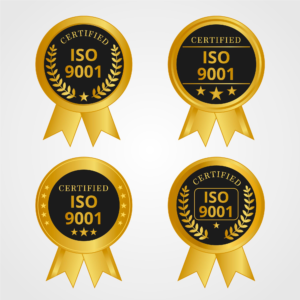
Small and medium-sized firms that wish to increase consumer confidence via better quality and service may consider adopting the ISO 9001 Quality Management Standard. Even while the phrase “ISO compliance” often makes compliance officers shudder, following ISO 9001 requirements doesn’t have to be challenging, especially for smaller organizations.
The ten top-level clauses of ISO 9001 must be met to become certified. You’ll better understand what the standard expects if you have a firm grasp of these ten clauses. Once you comprehend the rules and break down the criteria, simplifying ISO 9001 compliance for small to medium organizations becomes much easier.
Scope: This clause defines the standard’s scope and emphasizes the goals of quality management. The standard requires businesses to develop procedures that guarantee the output of consistent goods and services and, via adherence to these procedures, ensure customer satisfaction.
Standard references: This clause refers to the reference text ISO 9000:2015. It uses the same technical language as ISO 9001. Businesses must make sure they only use this document to understand these words.
Definitions of key terms: These are sources to help you comprehend the mentioned technical words. On the ISO website, you can also find these definitions. The meanings of the specialized words used in ISO 9001 must be located in ISO 9000:2015.
The business setting: The fourth provision requires the company to pinpoint any internal or external problems that impact the standard of its services and goods. These let the company define the specifications for its entire quality management system inside the framework of its business.
Leadership: The creation, audits, and reviews of the quality management system must be visible to the owner, CEO, or higher management. This clause necessitates evidence of leadership’s active involvement in assuring the QMS’s efficacy.
Planning: This provision demands the company recognize the threats and openings that may compromise the effectiveness of the quality management system to deliver improved services through conformity. It must contain steps to reduce risks and seize chances for progress.
Support: This provision guarantees that the QMS has the appropriate support systems. This can entail selecting team members with the proper knowledge and experience, selecting service providers that work well together, providing training, and ensuring the relevant tools are on hand.
Operation: This is a detailed plan for how the company will interact with clients and vendors, deliver goods and services, and accomplish QMS objectives. It should have guidelines for conducting operations, conducting controls and checks, and documenting non-conformances.
Performance assessment: This section calls for a system of tracking, measuring, and assessing the new practices the QMS has put in place to determine whether customer satisfaction has increased. Additionally, it specifies the necessity of management reviews and audits.
Improvement: This clause calls for proof of progress through taking remedial action and benefiting from opportunities found through planning and reviewing. There must be proof that gains were achieved gradually, even if they are not continuous.
The ISO 9001:2015 Quality Management System outlines what your business must do to satisfy customers by consistently delivering goods and services that meet their needs, increasing customer satisfaction through continuous improvement, and ensuring compliance with all applicable legal and regulatory requirements. Obtaining ISO 9001:2015 certification has several advantages for your business and your clients.



